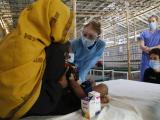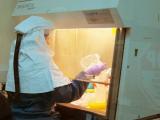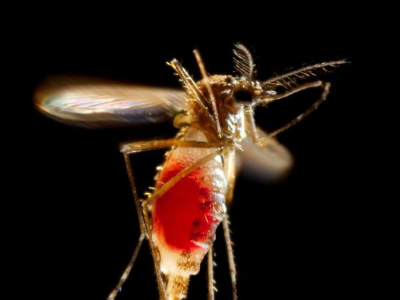Editor's Note: The Institute for Genomic Research (TIGR), where the research described was accomplished, was inadvertently omitted from the list of author affiliations in the 4th paragraph below; the article was updated Jul 1, 2004, to include this information.
Jun 29, 2004 (CIDRAP News) – Researchers recently discovered a strain of the common soil bacteria Bacillus cereus that was genetically equipped to make the deadly toxin produced by the closely related microbe Bacillus anthracis, or anthrax.
The finding increases the complexity of diagnosing severe respiratory illnesses resembling inhalational anthrax, which killed five people following the anthrax mailings in the fall of 2001, says the report in a recent issue of the Proceedings of the National Academy of Sciences.
B cereus is widespread and can cause food poisoning and a variety of other illnesses, especially in people with existing health problems or weakened immunity. B anthracis is far less common but can be fatal to anyone who inhales it and is not treated early with antibiotics.
Alex R. Hoffmaster of the Centers for Disease Control and Prevention (CDC) reported the research with colleagues from The Institute for Genomic Research (TIGR), the CDC, other US agencies, and two British universities. They retrospectively analyzed various Bacillus organisms isolated from patients who had had unusually severe disease.
One of these microbes, labeled G9241, came from a patient who had life-threatening pneumonia like that experienced by the 10 people who contracted inhalational anthrax in 2001. The patient, who previously had had no major health problems, was on a ventilator for 44 days and was treated with five antibiotics before he recovered, according to the report. The patient's history, clinical features, and laboratory findings were similar to those of the anthrax patients in 2001, the report says.
Several traditional analytical techniques indicated that G9241 was a strain of B cereus, though closely related to B anthracis, the report says. But to examine the organism more closely, the investigators used a rapid sequencing technique to generate a "draft" of the microbe's complete genome. The draft genome analysis confirmed that G9241 was a strain of B cereus. But it also showed that G9241 contained a plasmid (a ring of DNA separate from the chromosome) that was 99.6% identical to a plasmid (called pXO1) in B anthracis that contains the genes for anthrax toxin.
The investigators also tested the virulence of B cereus G9241 in mice. They injected mice with either G9241, B anthracis, or a nonpathogenic strain of B cereus. All the mice exposed to G9241 and B anthracis died, while those exposed to the nonpathogenic strain survived.
The discovery of a non-anthrax Bacillus species that contains anthrax toxin genes and can cause an infection resembling inhalational anthrax "adds substantially to the complexity of clinical and laboratory diagnosis in general and particularly during a potential bioterrorism event," the article states.
Because the tests most commonly used to identify B anthracis focus on the organism's two plasmids, the presence of anthrax-like plasmids in B cereus could result in false-positive tests and needless alarm, the authors say. On the other hand, it may be a mistake to regard B anthracis as the only species that can cause diseases like inhalation anthrax. The investigators suggest that it may be necessary to develop a more sophisticated system to look for anthrax virulence plasmids in Bacillus species other than B anthracis.
The authors note that the patient who was infected with G9241 may not have been the first in the United States to have suffered from a B cereus strain with anthrax-like toxicity. They cite unpublished reports of two recent cases of fatal respiratory illness that were attributed to B cereus strains that may have had genes for the anthrax toxin. The CDC is planning surveillance for severe pneumonia cases associated with B cereus, the report says.
Hoffmaster AR, Ravel J, Rasko DA, et al. Identification of anthrax toxin genes in a Bacillus cereus associated with an illness resembling inhalation anthrax. Proc Natl Acad Sci 2004;22(101):8449-54 [Abstract]


















